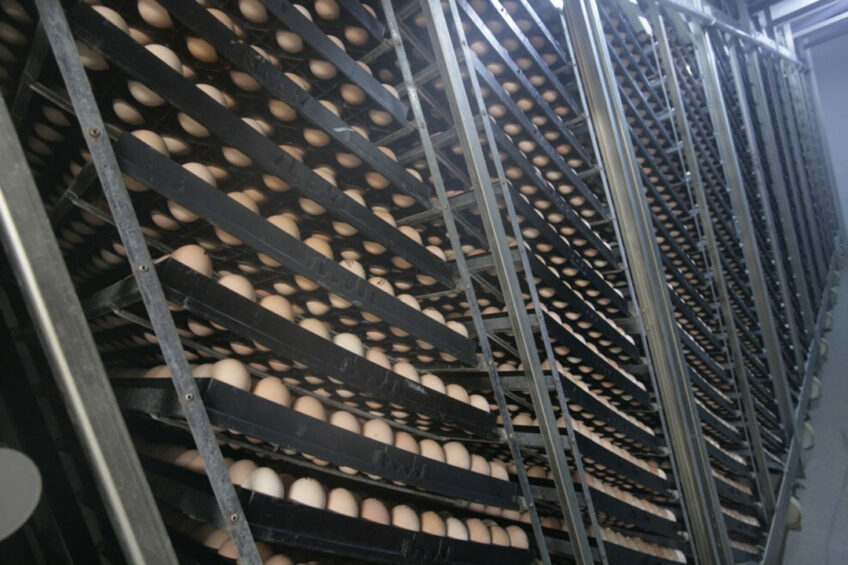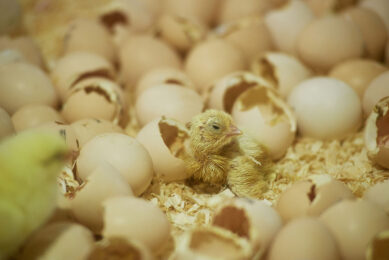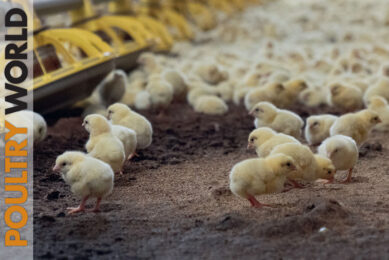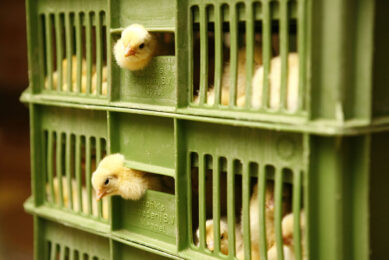Effect of incubation conditions on broiler lameness

Lameness is a major production disease affecting broiler welfare and profitability. As bone formation starts with cartilage formation during embryonic days 4 to 7, the incubation process is essential for optimum bone development. This article delves into the impact of incubation temperature and duration on bone quality and later life leg health in broilers.
Lameness is a major health and welfare issue which causes considerable economic losses because of additional labour, repeated treatments, euthanasia and early culling, as well as production and reproduction losses. Lameness can result in losses of 0.5% to 5% in a broiler flock during the growing period and can lead to carcass downgrading. It is estimated that lameness costs the USA poultry industry approximately US$ 150 million a year.
A welfare concern
Due to its association with pain, discomfort, reduced mobility, decreased ability to cope with the environment, lessened ability to eat and drink and consequent risk of dehydration or starvation, greater risk of excessive disturbance by other birds and disrupted sleep/rest patterns, as well as a greater predisposition to skin damage from scratches which may result in cellulitis and death, lameness is a welfare concern for the poultry industry worldwide.
Bone development and growth
It is estimated that up to 16% of broilers on a given farm are lame. Various factors, such as genetics, nutrition, infection, management and environment, affect leg weakness and lameness in broilers. Bone development and growth plate differentiation starts during embryo development and bone growth rate peaks in the days prior to hatch and for a few days post-hatch.
The term ‘lameness’ is used for a broad range of conditions, including feet and leg problems, conformational deficiencies, lameness, unsoundness, injuries and abscesses on the limbs.
Consequently, bone development disorders could have their origins in incubation. Recent studies have implicated variation in incubation conditions as a possible contributor to leg weakness and lameness in broilers. It is thus essential to optimise incubation conditions to reduce the incidence of lameness in broilers.
Lameness in broilers
Lameness is a major production disease affecting broiler welfare and profitability. Lameness is defined as a deviation from the normal gait caused by lesions, disease, leg weakness and other factors, such as genetics, nutrition, housing systems and management practices. However, the term lameness is used for a broad range of conditions, including feet and leg problems, conformational deficiencies, lameness, unsoundness, injuries and abscesses on the limbs.
The incidence of clinical lameness in broilers is 1-2%; however, many more broilers are subclinically affected, presenting changes in gait patterns and reduced walking ability, resulting in detrimental effects for feed conversion, growth and even defects in the processing plant.
Importance of incubator environment
Incubator environment is particularly important because it affects broiler organs for over half of its life (58%), considering 21 days incubation and 36 days rearing. Under commercial conditions, if the incubator temperature, humidity and ventilation conditions are not optimal, embryos encounter stress and the subsequent leg strength in broilers is negatively affected. For example, spraddle leg in broilers is associated with high humidity during incubation.
The optimum temperature for embryo development throughout incubation is 37.8°C and a lower or higher temperature may influence the quality of hatchlings and embryonic bone development. Effects of incubation temperature on embryonic bone development and later life leg health may be related to bone mineralisation speed during incubation.
Bone formation starts with cartilage formation during embryonic days 4 to 7 which is followed by a rapid increase in mineralisation from the second week of incubation onward, while growth plate differentiation reaches its peak just before hatch until a few days post hatch. Thus, raising egg temperature by even 1 degree, from 37.5ºC to 38.5ºC, during this period can increase the length of tibia and tarsus bones and decrease growth plate development of tibia in broilers.
Impact of temperature and duration
From embryonic day 10 to 18, both low (36.9°C) or high (39.6°C) incubation temperatures result in lower tibia weights at slaughter age. A high eggshell temperature of 38.6°C throughout incubation results in lower tibia, femur and metatarsus lengths at hatch compared to an eggshell temperature of 36.9°C and 37.8°C. An incubation temperature of 41.0°C can stimulate bone development in general and the ossification process from embryonic day 8 to 14.
Contrary to the potential beneficial effects of a higher incubation temperature in the second week of incubation, a higher temperature in the last week of incubation has negative effects on broiler bone health in later life. Cyclic overheating during the first 8 days of incubation increases the later incidence of tibial dyschondroplasia by influencing growth plate and chondrocyte differentiation.
“It is possible to improve locomotion in large, high-yielding broilers while improving growth rates by optimising incubation conditions.”
Pre-heating conditions of eggs prior to incubation, early low and/or late high temperature profiles and oxygen concentration below 21% during the last days of embryo development produce thinner tendon fibres and differing collagen banding patterns during subsequent growth. In addition, this leads to a thyroid hormone imbalance, relative asymmetry of leg bones at hatch and the incidence of twisted legs as late as 40 days of age.
Increasing temperature during incubation further results in a change in hatching date and hatchling body weight. Incubation duration is essential to the bone formation process in broilers. Prolonging incubation from 505 to 520 hours shortens tibial bone length. The time between hatching and setting is another stress factor which could influence broiler leg health and strength. Egg incubation in a multistage system decreases the prevalence of crooked toes and increases broilers’ locomotor activity.
Looking for the optimum
Incubation conditions can affect the bone development and some parameters of leg health in broilers, such as bone length and strength, crooked toes and gait scores. Thus, it is possible to improve locomotion in large, high-yielding broilers while improving growth rates by optimising incubation conditions.
The optimum temperature for embryo development throughout incubation is 37.8°C and lower or higher temperatures during incubation should be avoided to ensure good bone development at hatching. A combination of a higher temperature than normal in the second week of incubation combined with a lower temperature than normal in the last week of incubation may result in the most favourable bone development and later life leg health in broilers.
 Beheer
Beheer











 WP Admin
WP Admin  Bewerk bericht
Bewerk bericht